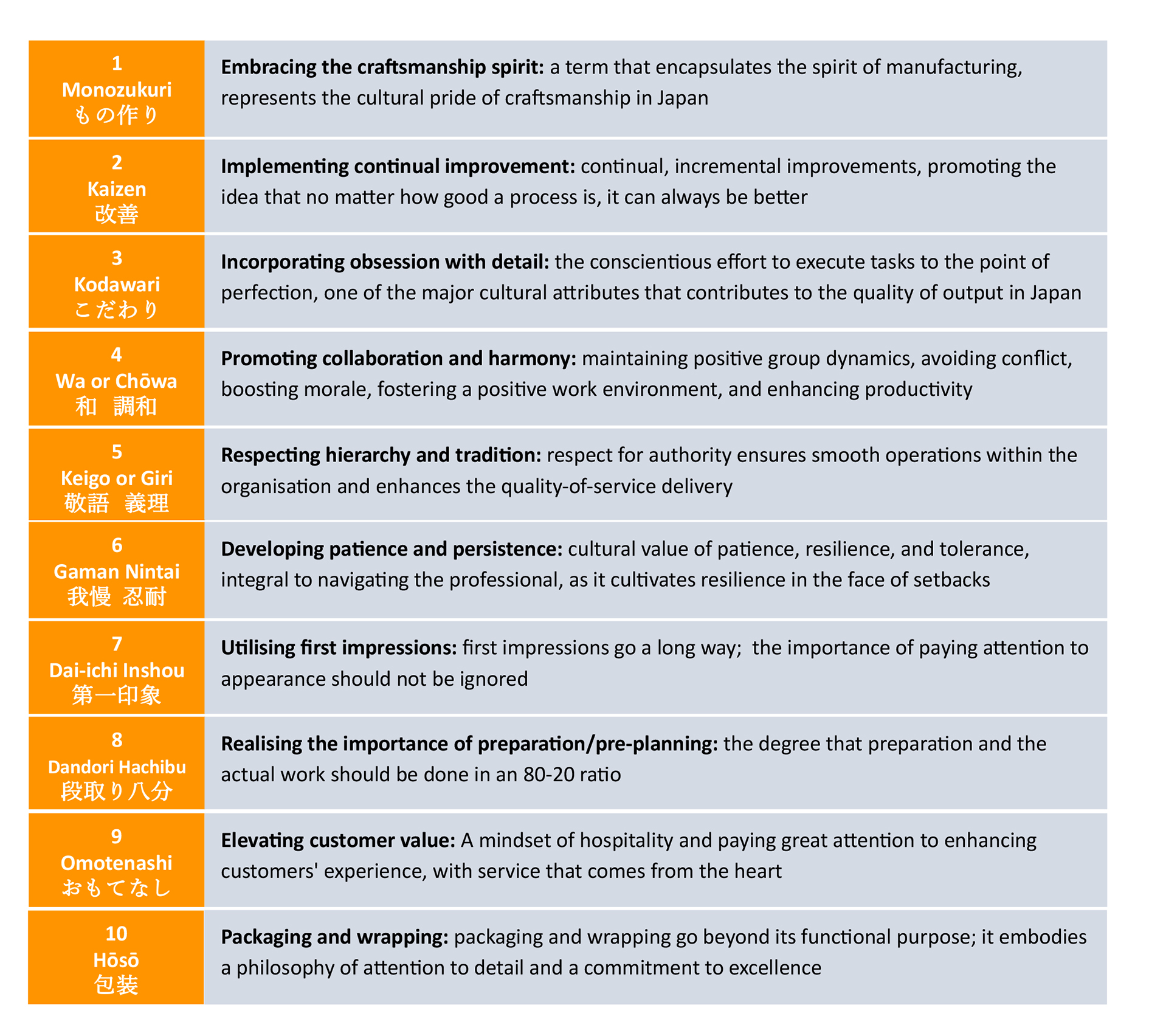
Exploring hidden dimensions Part 5: cultural quality and the double-edged sword
Progress indicator

IRCA-certified Associate Auditor and International Project Quality Lead Rasoul Aivazi, and retired auditor Richard Brett, explore how Japanese philosophies are intrinsic in quality.
Rasoul Aivazi is a committee member of the CQI Audit and Deming SIGs, while Richard Brett had roles as Japan Quality SME and Audit Manager for GSK, and is currently Vice-Chair of the Audit SIG.
‘Double-edged sword’ is a phrase used to describe something that has both positive and negative consequences or effects. It implies that something can be advantageous, but also have drawbacks.
Japan has made a mark on the world stage for its unsurpassed quality in many sectors. Beneath the successes and masterful craftsmanship, however, lies a complex weave of cultural codes and values that come with their own set of advantages and potential drawbacks.
Introduction
For any professional wanting to succeed in Japan, understanding, respecting and judiciously navigating its cultural codes and values is very important. It is equally crucial to strike a balance, ensuring that the pursuit of perfection and harmony does not overshadow the need for innovation, agility and individual wellbeing.
Nowadays, some Japanese leaders are able to ‘think outside the box’ and explore improved pathways. The younger generation of leaders needs to develop a win-win situation for their team members, their company and the client/customer in projects and work environments.
In addition to the 10 significant cultural influences that offer a roadmap for professional success in Japan – discussed in Part 3 and Part 4 of this series, and shown again in the table below – there is a well-known Japanese proverb suggesting that excess is as detrimental as insufficiency (過ぎたるは猶及ばざるが如し, sugitaru wa nao oyoba zaru ga gotoshi; translation – too much of a good thing can be bad). Simply put, excess can be counterproductive. Or, in other words, everything in moderation; the last drop makes the cup run over.
The contemporary generation in Japan, spanning experienced individuals, middle-career and youth, is devising new and improved strategies for engaging with the global community. It acknowledges that highlighting the positive aspects of Japan’s work culture is essential, but that it is equally important to address its challenges.

Here are some insights from Japanese individuals from the middle-career and young manager generations:
- We hold the 10 principles (outlined in Table 1) in high regard. If Japan remained secluded, like in the Edo era (the period in Japan’s history from 1603-1868), application of these principles could enhance our life significantly. However, in today's global marketplace they tend to diminish our competitive edge.
- The principles of monozukuri and kodawari can lead to excessive service without adequate compensation.
- The practice of kodawari, coupled with the ethos of omotenashi, leads to high client satisfaction. Yet, these often transform into unrewarded efforts.
- The cultivation of patience and persistence, gaman and nintai, while beneficial, may induce undue stress and a facade of resilience, potentially leading to mental and physical breakdowns, exemplified by karoshi (death from overwork).
- The notion that the customer is all-important underscores a prominent business philosophy and ethical approach within Japan. Nevertheless, a balance should be maintained where clients, suppliers and colleagues are regarded equally, and treated with the same level of respect and consideration.
This analysis explores the nuanced advantages and disadvantages of the cultural attributes discussed in Parts 3 and 4, offering a balanced view of their impact on contemporary Japanese society.
"The contemporary generation in Japan, spanning experienced individuals, middle-career and youth, is devising new and improved strategies for engaging with the global community."
a) Incorporating obsession with detail (kodawari): Translated, kodawari often means dedication to perfection. In a business context, this is clearly visible in areas from Japanese engineering to cuisine.
Advantage: results in high-quality products and services. It forms the bedrock of the Japanese reputation for reliability.
Drawback: such perfectionism can lead to longer development times, higher costs, and an inability to adapt quickly to market changes. It would make the system of work process-heavy when responding to requests for change from a client.
b) Promoting collaboration and harmony (wa and chowa): ‘Wa’ represents harmony, while ‘chowa’ is about achieving balance. In the professional realm, these concepts manifest in teamwork, consensus decision-making, and the blending of traditional and modern methods.
Advantage: results in stable, conflict-free work environments. It fosters deep relationships, longevity in partnerships, and respect for hierarchies.
Drawback: The quest for consensus may stifle individual initiative, often leading to slower decision-making processes. Also, the avoidance of confrontation and discussion sometimes prevents people from having different perspectives.
c) Respecting hierarchy and tradition (keigo and giri): Keigo is the art of using respectful language, whereas giri refers to societal obligation. Together, they underline the importance of social norms, etiquette, and the fulfillment of one's duties.
Advantage: ensures businesses run smoothly, and fosters loyalty and long-term associations.
Drawback: may hinder open dialogue and innovation, particularly when challenging established norms or senior opinions.
d) Developing patience and persistence (gaman and nintai): These virtues have historically helped the Japanese people to navigate natural disasters, economic downturns, and other adversities.
Advantage: this translates to long-term planning, commitment to projects, and the ability to endure market volatility.
Drawback: might deter a quick pivot during unforeseen circumstances or inhibit individuals from voicing legitimate concerns in challenging scenarios.
e) Using first impressions (dai-ichi inshou): The importance of the first impression, from bowing to the presentation of business cards (meishi), is taken seriously in Japan.
Advantage: fosters a culture of respect and trust from the outset of any professional engagement.
Drawback: can sometimes overshadow subsequent interactions or put undue pressure on participation during initial meetings.
This series will continue with ‘Part 6 – cultural quality and the double-edged sword’ in August.
Acknowledgement: This part of our series has undergone review and comment by a distinguished team of experts: Hiroyuki Iwamoto (岩本博之), Ryo Kanno (菅野亮), Shinya Watanabe (渡邉慎也), and Toshihiro Koga (古賀稔広). The author acknowledges and sincerely values the significant contributions and expertise they have provided.
Don't miss the first article in this series
In the first part of a series, Rasoul Aivazi and Richard Brett use stories from their own experiences to explore how Japanese philosophies are intrinsic in quality.
Join the conversation

Become a member and you too could input into future revisions of standards such as ISO 9001.



